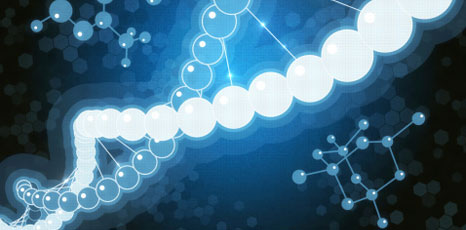Sardinian DNA study sheds light on the Age of Homo Sapiens

07.08.2013
The Genetic and Biomedical Research Institute of the Italian National Research Council IRGB-CNR, CRS4 and Sassari University have joined forces in a major genetics study funded by the Region of Sardinia. By analysing the islanders' genome the study was able to confirm that the origins of our male ancestors need to be traced to about 200,000 years ago and that the island's population displays the majority of the Y-chromosome variants to be found in Europe.
Published on the latest issue of 'Science' under the title "Low-Pass DNA Sequencing of 1200 Sardinians Reconstructs European Y-Chromosome Phylogeny", the study involved a sample group of about 1,200 Sardinian males, the largest cohort to date, using very advanced whole-genome sequencing techniques, then extracting and analysing the Y-chromosome data.
"Thanks to the data obtained from the Sardinian samples we have been able to go back far in time (...) to the African forefathers of all the humans of our species, who lived about 180,000-200,000 years ago, hence more than 50,000 years earlier than indicated by most previous studies", says Paolo Francalacci, teacher of Genetics at the Department of Natural and Land Sciences at Sassari University and first author of the study.
"Our study confirms that the DNA of Sardinians possesses certain distinctive characteristics, but it also shows that Sardinians display most of the DNA variability found on the Y chromosome of the other European peoples. In other words, this is the single population which seems best to encapsulate the genetic characteristics of all Europeans", adds Francesco Cucca, Head of the Genetic and Biomedical Research Institute (IRGB) of the Italian National Research Council and coordinator of the study together with Paolo Francalacci. "This feature makes this population a precious resource, both for evolutionary studies (such as that published in 'Science') and for the study of genetic risk factors for diseases that have a high prevalence on the island and in the rest of Europe". The next step will be to analyse the causes of diseases that are very frequent in Sardinia, such as diabetes and certain autoimmune and complex diseases for which no cure exists as yet."
The CRS4's sequencing and supercomputing centre took part in the study during the DNA sequencing phase in the lab, and in the final data analysis, contributing its IT know-how and huge computing power (120 Teraflops). This made it possible to calculate 6,700 new genetic variants for the Y chromosome.
The study was a team effort, involving a number of researchers: first Paolo Francalacci and Francesco Cucca, its leading authors. The other team members are: Laura Morelli from Sassari University, Carlo Sidore and Serena Sanna from IRGB-CNR, Riccardo Berutti from CRS4 and Andrea Angius from IRGB-CNR/CRS4. The study also saw the involvement of researchers from other centres, such as Porto Conte Ricerche, the Universities of Pisa and Bilbao, the University of Michigan and the National Institute on Aging of Baltimore.
The paper published on August 2nd in 'Science' is dedicated to Laura Morelli, one of its authors, who passed away recently after a brief illness.
Useful links
ScienceMag - Low-Pass DNA Sequencing of 1200 Sardinians Reconstructs European Y-Chromosome Phylogeny
Published on the latest issue of 'Science' under the title "Low-Pass DNA Sequencing of 1200 Sardinians Reconstructs European Y-Chromosome Phylogeny", the study involved a sample group of about 1,200 Sardinian males, the largest cohort to date, using very advanced whole-genome sequencing techniques, then extracting and analysing the Y-chromosome data.
"Thanks to the data obtained from the Sardinian samples we have been able to go back far in time (...) to the African forefathers of all the humans of our species, who lived about 180,000-200,000 years ago, hence more than 50,000 years earlier than indicated by most previous studies", says Paolo Francalacci, teacher of Genetics at the Department of Natural and Land Sciences at Sassari University and first author of the study.
"Our study confirms that the DNA of Sardinians possesses certain distinctive characteristics, but it also shows that Sardinians display most of the DNA variability found on the Y chromosome of the other European peoples. In other words, this is the single population which seems best to encapsulate the genetic characteristics of all Europeans", adds Francesco Cucca, Head of the Genetic and Biomedical Research Institute (IRGB) of the Italian National Research Council and coordinator of the study together with Paolo Francalacci. "This feature makes this population a precious resource, both for evolutionary studies (such as that published in 'Science') and for the study of genetic risk factors for diseases that have a high prevalence on the island and in the rest of Europe". The next step will be to analyse the causes of diseases that are very frequent in Sardinia, such as diabetes and certain autoimmune and complex diseases for which no cure exists as yet."
The CRS4's sequencing and supercomputing centre took part in the study during the DNA sequencing phase in the lab, and in the final data analysis, contributing its IT know-how and huge computing power (120 Teraflops). This made it possible to calculate 6,700 new genetic variants for the Y chromosome.
The study was a team effort, involving a number of researchers: first Paolo Francalacci and Francesco Cucca, its leading authors. The other team members are: Laura Morelli from Sassari University, Carlo Sidore and Serena Sanna from IRGB-CNR, Riccardo Berutti from CRS4 and Andrea Angius from IRGB-CNR/CRS4. The study also saw the involvement of researchers from other centres, such as Porto Conte Ricerche, the Universities of Pisa and Bilbao, the University of Michigan and the National Institute on Aging of Baltimore.
The paper published on August 2nd in 'Science' is dedicated to Laura Morelli, one of its authors, who passed away recently after a brief illness.
Useful links
ScienceMag - Low-Pass DNA Sequencing of 1200 Sardinians Reconstructs European Y-Chromosome Phylogeny








